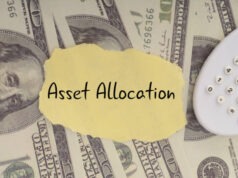
Retirement planning is an important phase for every self-employed entrepreneur.
Without relying on traditional approaches, it’s crucial to stay ahead and ensure your financial stability for the future.
It is well-known that only a minority of self-employed people are participative in planning their retirements. For example, in two-person firms where both people are self-employed, approximately 17.8% of them only participate in the workplace-sponsored retirement plan. This is simply indicating that more planning should be pulled up to ensure the future of the self-employed. This blog post will provide a detailed guide to creating a comprehensive retirement plan, tailored specifically for the unique requirements of self-employed entrepreneurs.
Analysis of Your Current Financial Position
Retirement planning begins with knowing your financial position. This involves looking at all of your income streams, expenses, and existing savings. By reviewing them, you get in touch with your assets and liabilities.
Therefore, it’s a solid starting point. Moreover, creating a personal balance sheet is crucial in this process. It helps you monitor your financial progress and make informed decisions.
Setting Retirement Goals and Exploring Options for Retirement Savings
Defining what retirement means to you is essential in the quest for retirement planning. Everyone has unique dreams and lifestyles they aspire to maintain post-retirement. While it might sound challenging, it’s crucial to calculate the funds you’ll need. Considering this, you have to explore various retirement savings options, including plans like the Solo 401(k), SEP IRAs and Traditional and Roth IRAs. Each of these plans tends to offer various advantages (and challenges) catering to different financial situations and objectives.
For instance, the Solo 401(k) plan is very suitable for self-employed business owners without employees. This particular type of retirement account has bigger contribution limits for both the employer and employee, compared to other retirement options. This double contribution feature raises the potential retirement savings for a business owner.
Solo 401(k) not only allows huge annual savings but also comes with tax benefits. Pre-tax contributions can reduce taxable income for the year. This plan also offers investment flexibility, allowing you to choose from options like stocks, bonds, or mutual funds for your deposited funds. Most importantly, a Solo 401(k) also features loan provisions and is not complex to administer. This makes it an ideal pick for the many entrepreneurs who aim to maximize their retirement savings as they continue to maintain control over their investment decisions.
By understanding the available options, you will have a foundation for effective retirement planning. This will set both short-term and long-term realistic financial goals to smoothen the pathway towards a comfortable retirement. Knowing the details of each option clarifies the decisions you should make, based on your financial objectives and tax situation.
Diversify Income Streams
Diversifying income sources after retirement is not just a precaution but a strategic move to strengthen financial security. In addition to income from your business, consider diversifying by investing in stocks, bonds, real estate, or even initiating a side venture. These investments can provide additional streams of income, such as dividends or rental earnings, enhancing your financial stability post-retirement.
Furthermore, diversification reduces financial risk by providing a more stable foundation. If one income source performs poorly, others can offset the shortfall. The goal is to establish multiple channels for income, ensuring a steady flow of funds even when you are no longer actively earning.
Adjusted Taxes and Inflation Planning
When preparing for retirement, it’s wise to consider tax-deferred accounts. These accounts permit you to defer tax payments until retirement, potentially allowing you to pay taxes at a lower rate.
Additionally, be aware of factors like inflation and changing tax laws. Inflation can reduce purchasing power over time, and tax laws may vary. To protect your savings, investing in appreciating assets like certain stocks or real estate can be beneficial. Regularly reviewing and adjusting your strategies in response to these factors is also important for maintaining the value of your retirement savings.
Professional Advice
Planning for retirement requires more than financial know-how. Often, expert guidance is needed to manage the complexities. For instance, hiring an adviser can help you tailor a plan that will suit your specific business circumstances and personal goals. They can help identify suitable retirement accounts, investment strategies, and tax plan techniques.
Additionally, an advisor can offer continuous support in the development of your plan as your business grows and your financial situation changes. However, it’s important to have a competent and reputable advisor who appreciates the entrepreneurial journey and its impact on retirement planning.
Conclusion
Developing a retirement plan as a self-employed entrepreneur demands efficient planning and strategy. In order to retire comfortably, you have to: know your financial situation, set goals, look at saving options, diversify income for taxes and inflation, and seek advice. Remember, it is never too early or late enough to start planning for the future. Take the first move today and start walking the path of fulfilling retirement.



































